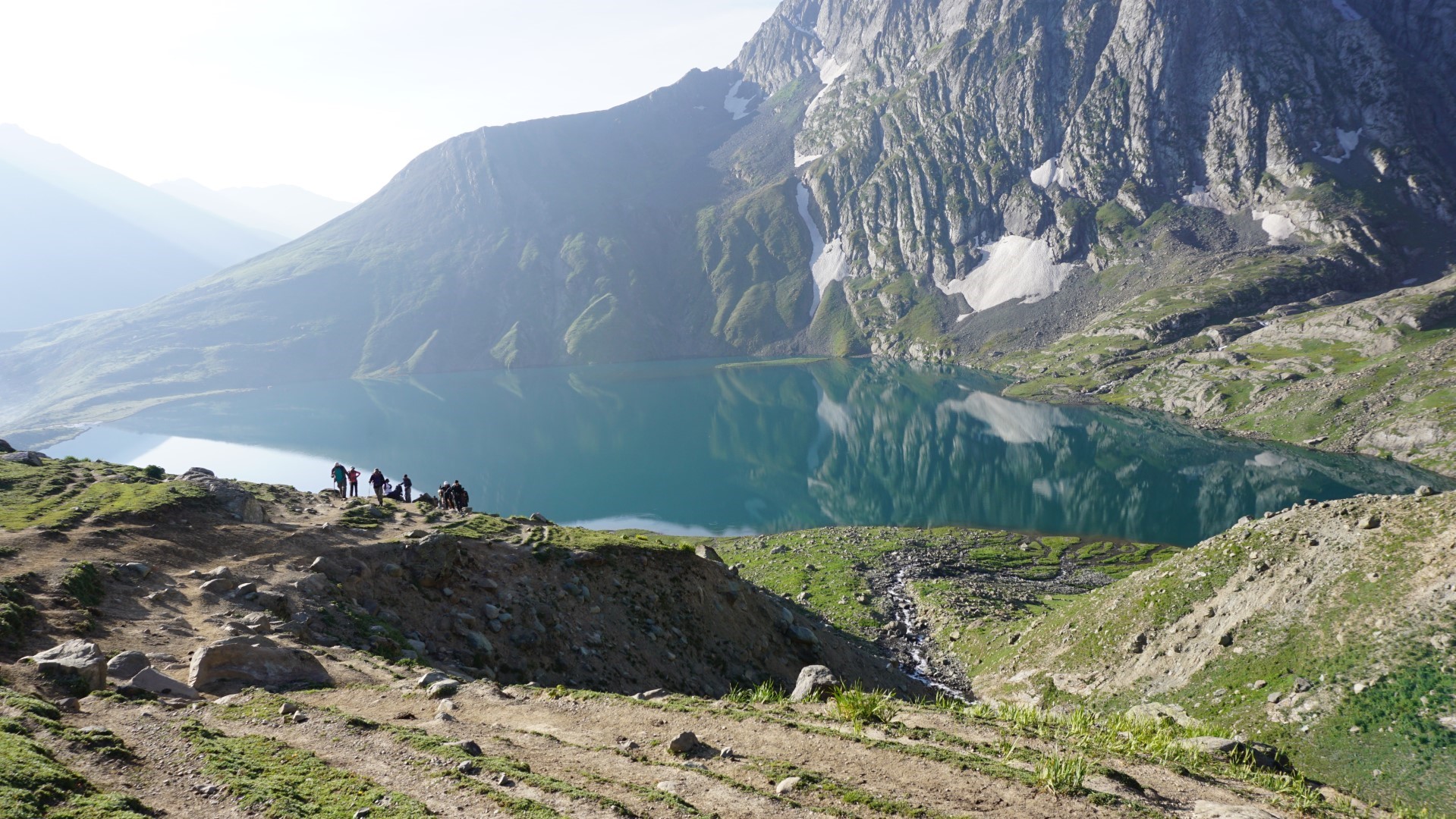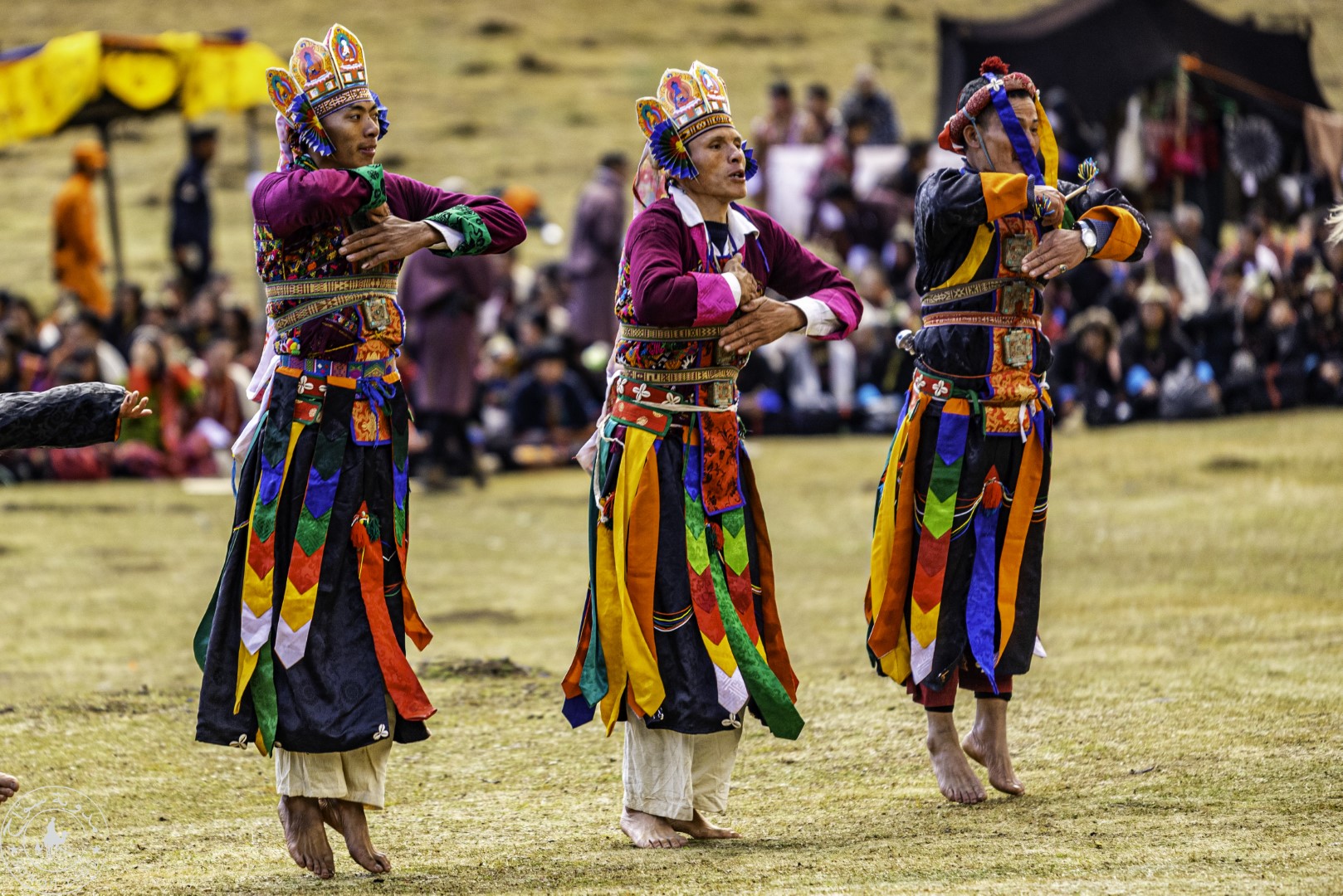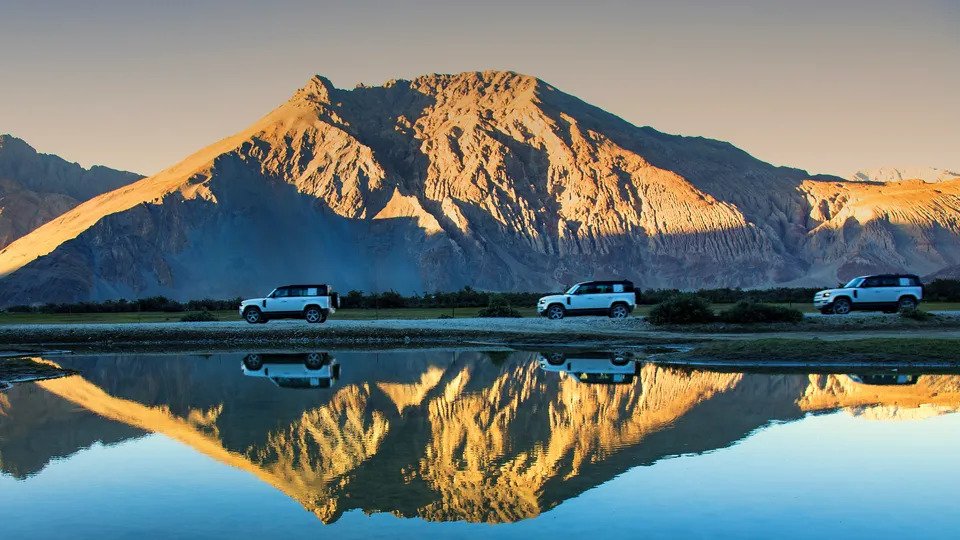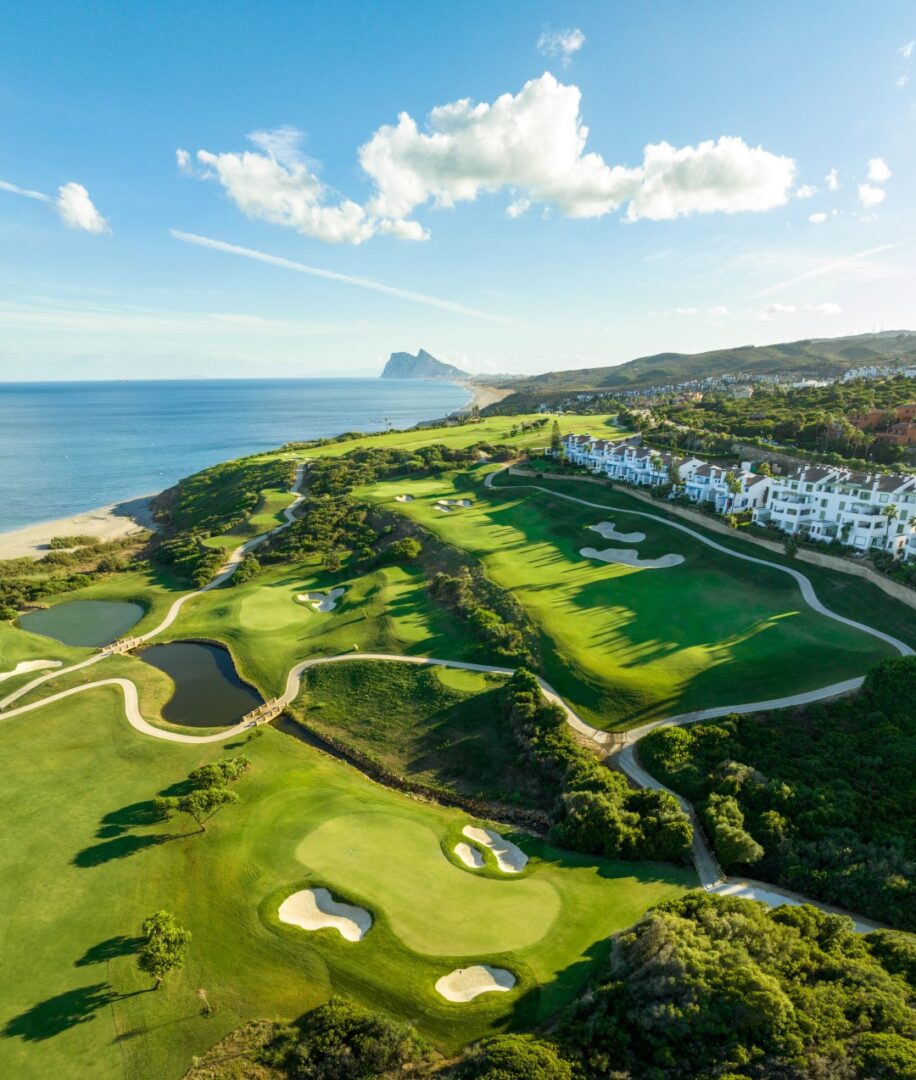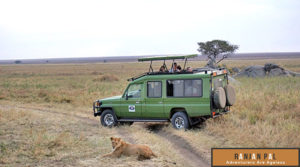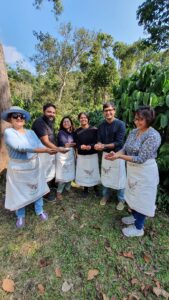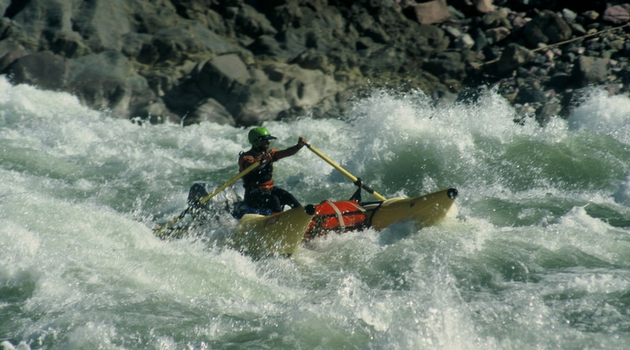

Rolling on the River
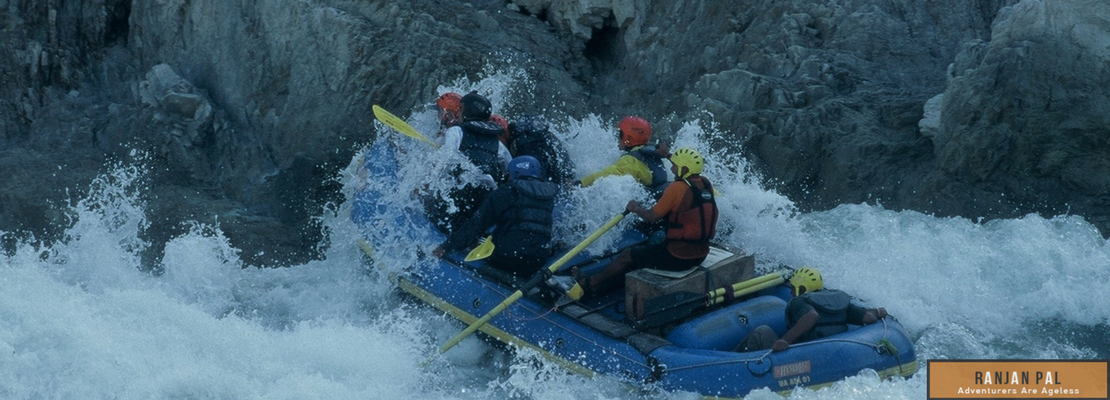

We sit tensely in the raft, knuckles white on the T-grips of our paddles. The last minute briefings are over and we’re ready to go. Our intrepid team of kayakers and rafters has spent almost an hour scouting this big Class IV rapid from the shore. Named for Ningguing village, which perches high above it, it is the first of the mighty Brahmaputra’s challenges. From the shore it looks ominous – two separate streams of racing green water crash together in giant diagonal waves to form a frothing, foaming dragon’s back, which could flip a raft as easily as a coin.
I can feel myself sweating under my wetsuit and yellow splash jacket. With two short trips on the Ganga, have I bitten off more than I can chew? This giant river, bigger than anything I have ever seen, seems an entirely different proposition. I feel a bit like a weekend go-kart driver being thrust into a Formula One race. But now there is no time to think as we are drawn inexorably forward by the flow of the churning water.
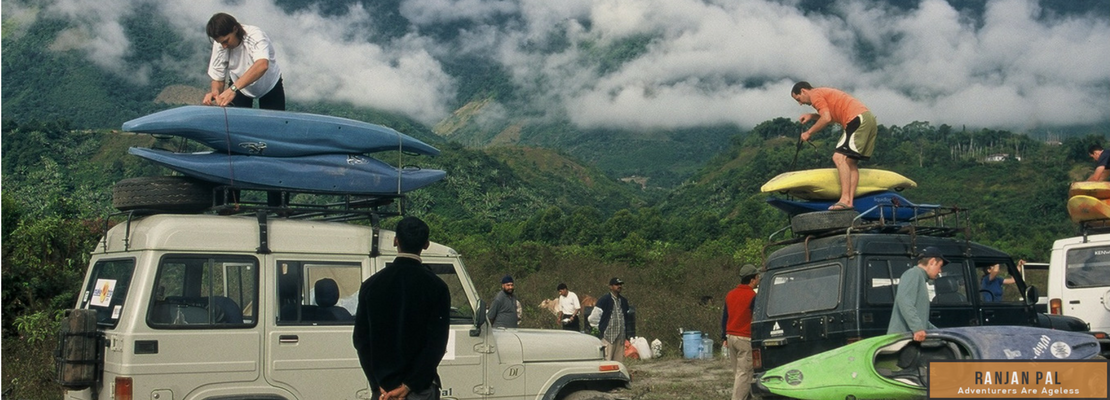

We can hear the continuous roar of the enormous rapid, bellowing its challenge. The waves are suddenly menacingly huge and the raft begins to rock alarmingly. Our guide Anvesh gives the order, “Paddleforward, all together, nice and easy,” and we quickly bend to task. The raft bucket across the foam as probing fingers of water jab more and more strongly at the bottom of our flimsy craft. The thunder of the rapid is all around us and the wave start slamming over the sides of the raft, drenching us to the skin. Anvesh screams out,”Hard paddle now! Let’s rock it, guys!” We dig in desperately but the water is surging below us like a thing possessed, and the paddles flail at empty space.
What happens next is a blur. One second we are riding up a massive wave, the raft angled sharply upwards, and the next we are poised at its crest over a huge gaping charm. A massive wave broadsides us and we are flung into the maelstrom of whitewater. I plunge into the icy depths, conscious only of the fact that I am subject to the whimsical forces of the nature over which I have no control. It is a sobering thought, but I have no time to be frightened. I fight for survival, gasping to the surface only to be sucked under by another wave. I am hurtled along like a rag doll, paddle still clenched tightly in my fist. After that seems an eternity-but probably seconds-I spy a familiar orange shape through my watery vision. Pete, One of the safety kayakers, has come to my rescue; I cling gratefully onto the back of his boat as he tows me to safety. I collapse on the rocky beach; my breath coming in ragged gulps; I can barely comprehend the danger of what I have just been through.
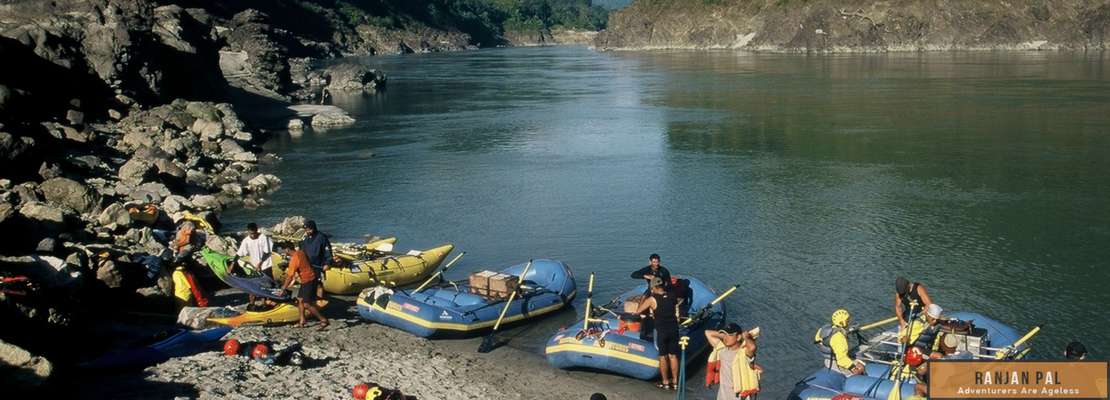

Later that evening, huddled around the glowing campfire, cupping warm mugs of rum in our hands, it is time for reflection. Two of the four rafts flipped in Ningguing and two in the Palsi rapid a few hours later. We have been caught off-guard by the immense power of the Siang-as the Brahmaputra is called in its upper reaches in India-meaning “great river.” For many of the rafters who have done several trips down the Ganges, the Alaknanda, the Bhagirathi, the Tons and other big North Indian rivers, the experience of “flipping” is novel and not entirely welcome. Our feelings pour out as the flames flicker across tense, anxious faces. But I feel exhilarated to have survived this amazing day.
Rafting Know-How
-
Rivers are rated on their difficulty levels, with Class I being the easiest to run, and Class VI for more advanced rafters. Beginners should start with a river that is rated Class III or lower.
-
No special equipment is required-only shorts, T-shirts and good pair of strap-on sandals.
-
River rafting is a relatively safe adventure activity. Qualified outfitters should provide all the safety equipment (life jackets, helmets, foot braces.) In colder weather, they also provide spray jackets, spray pants and wetsuits.
-
A high level of fitness is helpful – especially in more serious rapids – but not required.
-
Children over the age of 14 can join in on most trips.
High on the Great Descent
I think back over the long journey that had brought me to this far northeast corner of India, a place few of my countrymen know much about, let alone visit. When Vaibhav Kala and his outfit Aquaterra Adventures put out the call to join this expedition, I found it difficult to resist. First, there was the thrill of being one of the first to descend the Siang – while it had been run a handful of times before by military-assisted private groups, this was to be the first big commercial trip. If we made through successfully, we would prove that it could be done on a more regular basis. Second, the idea of a river journey on the great Brahmaputra – which translates as “Son of the Creator” was a fascinating one. As one of the world’s highest and greatest rivers, it starts as the Tsang Po from the sacred lake of Mansarovar in western Tibet. Racing across several hundred kilometers of the Tibetan plateau, it loops back on itself – the fabled “Big Bend”-before entering Arunachal, India’s north eastern most state.
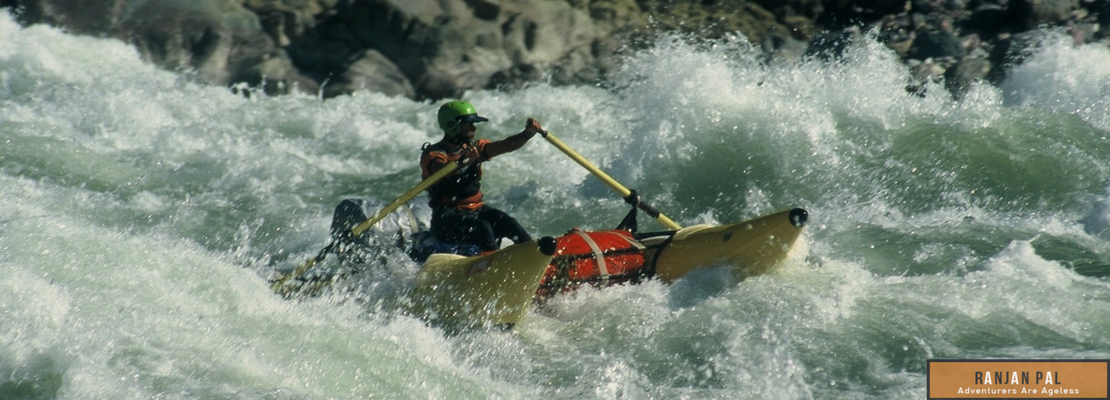

The Chinese invasion of 1962 across this border has left the area with a strong military presence and stringent visitor permits that obviously discourage casual tourists from traveling to this region. As a result, Arunachal Pradesh, despite its fascinating geography and culture, remains one of India’s most remote and unexplored regions. The arduous journey to reach the put-in point at Tuting, 30 kilometers from the border, had taken us four days and three forms of
transport: airplane, a battered old river ferry and finally a convoy of Sumo jeeps driven into the mountainous Siang valley.
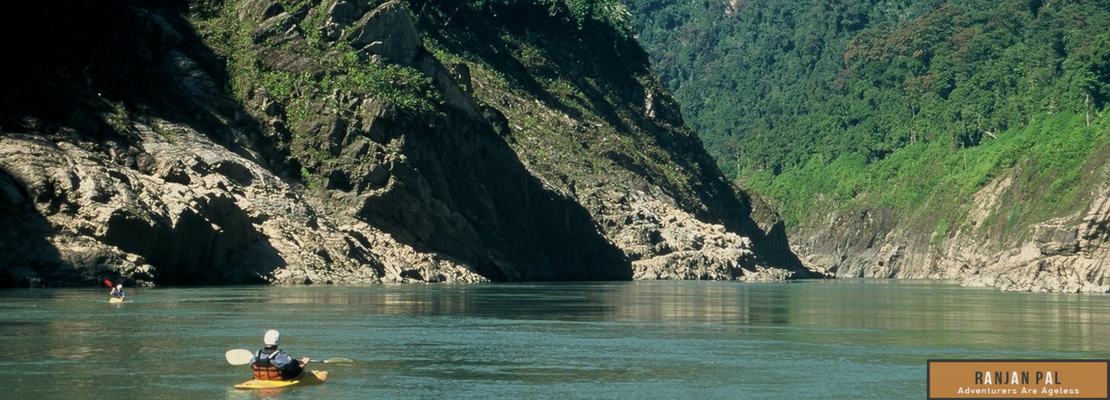

The river is home to a fascinating tribe of hill people, the Adi, who still preserve their ancient customs and traditions. En route we visited of Riga, a cluster of thatched huts supported on wooden stilts. The people who crowded around us possessed smooth skin and features much more akin to the people of Southeast Asia than to the other inhabitants of northern India. An old woman gleefully demonstrated how to pound the rice chaff with her bare feet; it was later brewed into apong, a potent rice beer. The wizened village headman-the gam-made a grand appearance in his full battle regalia; ringed cane helmet, bark loincloth and quiver of poisoned arrows. He gave me his sword belt to try on, and I unsheathed his dao, or sword, with a careless flourish, nearly decapitating him in the process. The crowd erupted in hilarity and I beat a hasty retreat.
A Change of Plans
Confronted by the unexpected severity of the Siang’s challenge, we decide that a change in strategy is in order. “Skinny” Jones, the leader of the Welsh kayakers, and Rico and Jed, the two young Americans, leave early the following morning to do a reconnaissance of the Marmong gorge, which lies ahead. The rest of us are glad of this unexpected rest day to loll about and recover our spirits-all except the Brits, who roll madly about in the sand, entertaining us with their antics under the midday sun. Camp Pango with its row of orange and gray Rapeede tents nestled together on a crescent of white sand is an idyllic spot. I have never seen such a profusion of wild vegetation. Giant plantains loom out of the mist like ghostly green spiders, their leafy tendrils drooping to the earth. Others are dotted across the hillside, exploding into view like silent green fireworks from the surrounding forest cover.
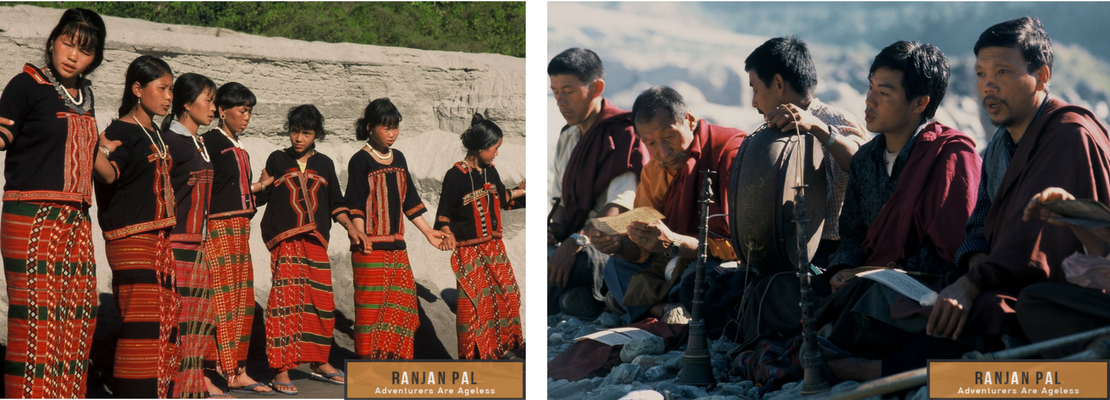

Reassured by the scouting expedition, we leave early the next morning only to be shaken wide-awake by the spray from another Class III+, which guards the entrance to the gorge. “Riding the wave train down that big green highway ” is what Jed calls it. I fail to share his easy nonchalance but the mix of metaphors is a compelling description as we lurch and plunge our way through the giant rapids. A shaft of sunlight illuminates our colourful little flotilla – four rafts, nine kayaks and a cataraft – as we enter the gorge. It is a spectacular place – the sheer rock walls tower above us, crowned by the dense forest. Graceful little waterfalls plunge from the heights, the kayakers revelling in their glittering spray. It is easy to imagine that no one has ever been here before. But someone – or something – clearly has. Two hundred feet above the river, the vegetation comes to an abrupt end, sliced off in a clean line as if by a dao. This is the high water mark of the flood of June 2000 when a great wall of water swept down from the Himalayas, wiping out people, houses, bridges and the forest. The mind fails to imagine what that immense force would have been like in the narrow confines of this rocky gorge.
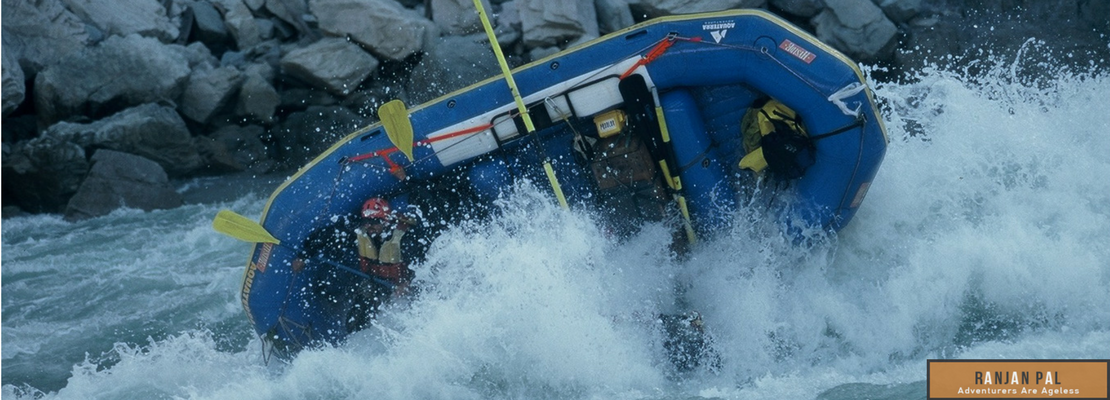

After the adrenalin rush of those early days, the rest of the trip is less eventful; though still thrilling in its own way. There are long stretches of calm and the signs of human habitation begin to appear again – terraced fields, thatched huts, the occasional mithun, a cross between a bison and a buffalo. We pass under several unbelievable suspension bridge made of cane and bamboo. At Tuting, I ventured across one such precarious construction, my heart in my mouth as it swayed alarmingly above the Siang racing far below. The Adis nonchalantly hang out on them or race down to the riverbank to greet us and cheer us on. This enthusiastic response has been quite overwhelming. Everywhere long lines of pretty tribal women, chanting and swaying in their gaily-colored skirts, have welcome the expedition. They encourage us to join them and we need no second invitation. We are touched by the spirits and generosity of these wonderful people and raise our oars in salute. What a wild and crazy ride this has been-one I shall remember all my life.
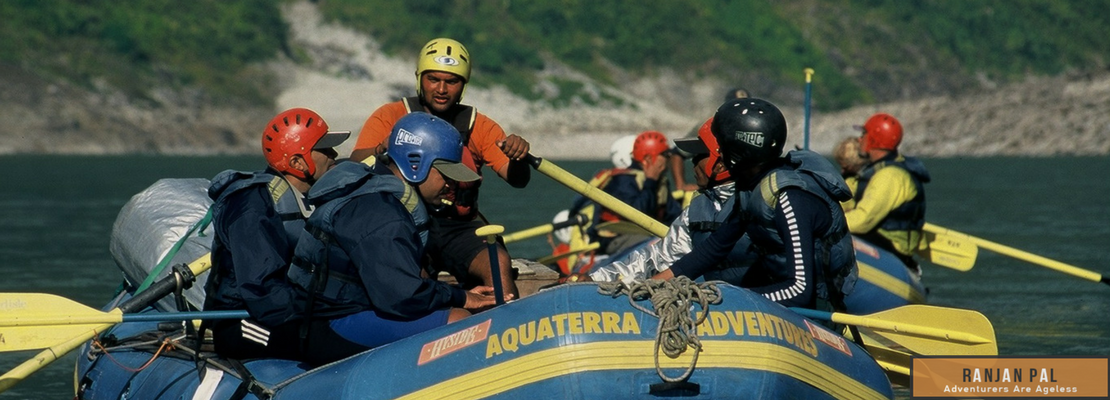

**This article has originally appeared in the March 2003 edition of “Holiday Asia” magazine. Check the PDF version here.
North India Adventures
Getting There
Indian Airlines and Thai Airways International fly daily from Bangkok to Delhi, and Air India makes the connection five times a week. Singapore Airlines links Singapore and Delhi every day, while Cathay Pacific flies four times a week from Hong Kong and thrice weekly from both Jakarta and manila.
Inside Track
All foreign travelers in India require a valid passport and a tourist visa, which is issued for a minimum of six months. Allow at least 24 hours of visa processing (when submitting in person); the charge is US$60 for US citizens and $40 for other nationalities.
In addition, foreigners planning to visit Arunachal Pradesh need a Restricted Area Permit, obtainable from the Indian embassies abroad for a period of ten days for a group of four or more. It’s simpler to arrange this through the rafting outfitter at the cost of US$50 per head.
The airport departure tax in Delhi is Rs. 500/- (to be paid in rupees; US$1=Rs48).
Who to call
Founded in 1995, Aquaterra Adventures, one of the India’s most innovative rafting companies, is run by people with more than 10 years of experience in mountain travel and river guiding. Their three- to 16-day rafting trips cover India’s major rivers; the Ganges, Alaknanda, Bhagirathi (best season to visit Oct-Apr), Tons (best Nov-May), Kali (best Oct-May), Zanskar (best Jul-Sep), Lohit and Brahmaputra (best Nov-Feb) rivers. Prices starts from US$90 (a three day rafting trip on the Ganges). They also offer trekking, jeep safaris, wildlife and fishing tours, plus custom-tailored trips. Tel: (91-11) 2623-2641, fax: (91-11) 2623-2641, [email protected], www.treknraft.com.
Established in 1988, Himalayan River Runners (India) Pvt. Ltd. has pioneered many first river descendant explorations in the Indian Himalayas. They feature extensive rafting trips (with two “luxury” base camps), plus trekking (all levels), bird watching and fishing trips all over India (one to 21 days). Prices range from US$45 (overnight) to $1,750 (15 days on the Zanskar, includes airfare Delhi-Leh-Delhi) to $2,500 (a challenging 20-day trek and raft expedition). Tel: (91-11) 2696-8169, fax: (91-11) 2686-5604, [email protected], www.himalayanriverrunners.com.
Outdoors Adventures India, with more than 16 years of experience on rivers and wilderness areas of the Indian Himalayas, maintains a base camp on the Upper Ganges (Oct-Apr) from which rafting and trekking operates (three to 15 days; three days US$120). Trips can be tailored as needed. Tel: (91-124) 2656-3648/-9 or (91-11) 2601-3578/-9, [email protected], www.raftindia.com
![]()
![]()

